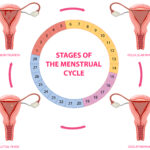FREE SHIPPING OVER $50
Walk Pain-Free Again! The Best Plantar Fasciitis Stretches That Keep You On Your Feet

Imagine this: you wake up in the morning, swing your legs out of bed, and as your feet touch the floor for that first step, a sharp, searing pain shoots through your heel. Or perhaps it’s after you’ve been sitting for a while, and getting up feels like walking on broken glass. If this sounds painfully familiar, you’re likely one of the millions grappling with plantar fasciitis.
This stubborn foot pain can turn simple daily tasks into agonizing chores, sidelining you from your favorite fitness activities and making every step a dread. It feels like your feet are betraying you, doesn’t it?
But here’s the good news, and a real beacon of hope: you can walk pain-free again. You don’t have to live with that constant ache. The secret lies in understanding your feet and consistently using the right tools to soothe and strengthen them. And often, the most powerful tools are simple, targeted plantar fasciitis stretches.
What Exactly is Plantar Fasciitis? (And Why It Hurts So Much)
Before we dive into the stretches, let’s quickly understand your adversary. The plantar fascia is a thick band of tissue that runs along the bottom of your foot, connecting your heel bone to your toes. It acts like a shock absorber, supporting the arch of your foot and helping you walk, run, and jump.
Plantar fasciitis happens when this tough band of tissue becomes inflamed, irritated, or even develops tiny tears. Think of it as a rope under constant tension. If you overstretch or overload it repeatedly, it starts to fray.
Common culprits behind Plantar Fasciitis
- Overuse: Suddenly increasing your activity level or duration (e.g., starting a new running program too quickly).
- Tight Calf Muscles: Tightness in your calf muscles and Achilles tendon (which connects your calf to your heel) pulls on the plantar fascia, increasing tension.
- Improper Footwear: Shoes that lack adequate arch support or cushioning, or wearing worn-out shoes.
- Foot Mechanics: Flat feet, high arches, or an unusual walking pattern can put extra stress on the plantar fascia.
- Increased Weight: Extra body weight puts more strain on your feet.
The Power of Stretching: Your Secret Weapon Against Plantar Fasciitis Pain
So, if the problem is tension and inflammation in the plantar fascia and surrounding muscles, what’s the solution? Stretching is your most potent, non-invasive weapon. Here’s why it’s so crucial for plantar fasciitis relief:
- Reduces Tension: Targeted stretches gently lengthen the plantar fascia itself, as well as the tight calf muscles and Achilles tendon that contribute to the pulling on your heel. This directly eases the source of the pain.
- Improves Flexibility: Regular stretching enhances the overall flexibility of your foot and ankle, promoting healthier movement patterns.
- Increases Blood Flow: Movement and stretching can increase circulation to the affected area, which helps deliver essential nutrients for healing and carries away inflammatory byproducts.
- Promotes Healing: By reducing strain and improving circulation, stretching creates a more favorable environment for the inflamed tissue to recover and repair.
- Prevents Recurrence: Consistent stretching helps maintain flexibility and reduce chronic tension, significantly lowering your risk of future flare-ups.
The 7 Best Plantar Fasciitis Stretches That Keep You On Your Feet
Ready to feel that blissful relief? Here are the best plantar fasciitis stretches that can help you reduce pain and keep you on your feet. Perform each stretch gently, hold for 20-30 seconds, and repeat 2-3 times per foot. Avoid bouncing.
1. Plantar Fascia Stretch (Towel Stretch)
This is a classic for a reason – it directly targets the plantar fascia.
- How to Perform: Sit on the floor with your legs extended in front of you. Loop a towel (or resistance band) around the ball of your affected foot. Hold the ends of the towel with both hands. Gently pull the towel towards you, keeping your knee straight, until you feel a good stretch along the bottom of your foot and in your calf.
- Focus: Plantar fascia, calf muscles.
- Tips for Best Results: Keep your back straight. You should feel a stretch, not sharp pain. This is an excellent stretch to do first thing in the morning before putting weight on your foot.
2. Wall Calf Stretch (Gastrocnemius Focus)
Tight calf muscles are often a major contributor to plantar fasciitis. This stretch targets the larger calf muscle.
- How to Perform: Stand facing a wall, about arm’s length away. Place your hands on the wall at shoulder height. Step your affected foot back, keeping your heel on the ground and your leg straight. Lean forward into the wall, feeling the stretch in your upper calf.
- Focus: Gastrocnemius (upper calf muscle), Achilles tendon.
- Tips for Best Results: Keep your heel firmly on the ground. Don’t let your knee bend on the back leg.
3. Wall Calf Stretch (Soleus Focus)
This variation targets the deeper soleus muscle, also crucial for foot health.
- How to Perform: Same starting position as the previous stretch, but this time, bend the knee of your back (affected) leg slightly as you lean into the wall. You’ll feel the stretch lower down in your calf, closer to your Achilles.
- Focus: Soleus (lower calf muscle), Achilles tendon.
- Tips for Best Results: Ensure the bent knee is directly over your ankle to get the deepest stretch.
4. Stair Calf Stretch (Achilles Tendon & Calf)
Using a step allows for a deeper stretch in the Achilles tendon and calves.
- How to Perform: Stand on a stair or elevated surface with the balls of your feet on the edge and your heels hanging off. Hold onto a railing for balance. Slowly lower your heels below the step until you feel a gentle stretch in your calves and Achilles tendon.
- Focus: Achilles tendon, gastrocnemius, soleus.
- Tips for Best Results: Keep the movement controlled and smooth. You can do one foot at a time for a more intense stretch.
5. Seated Plantar Fascia Stretch (Toe Flex)
An easy, accessible stretch you can do almost anywhere.
- How to Perform: Sit in a chair. Cross your affected foot over your opposite knee. With one hand, grasp your toes and gently pull them back towards your shin until you feel a stretch along the bottom of your foot. You can also use your thumb to massage the arch of your foot while stretching.
- Focus: Plantar fascia.
- Tips for Best Results: Feel for the taut band of your plantar fascia and make sure you are actively stretching it. This is great for short breaks throughout the day.
6. Golf Ball or Frozen Water Bottle Roll (Complementary Release)
While not a stretch, this is a vital technique for massaging and releasing tension in the plantar fascia.
- How to Perform: Sit in a chair. Place a golf ball, tennis ball, or frozen water bottle under your affected foot. Roll your foot slowly back and forth over the ball/bottle, applying gentle to moderate pressure. Focus on tender spots.
- Focus: Releasing trigger points and tension in the plantar fascia.
- Tips for Best Results: Use a frozen water bottle for added anti-inflammatory benefits. Do this for 5-10 minutes per foot, especially after prolonged standing or activity.
7. Toe Curls / Marble Pick-Ups (Foot Muscle Strengthening)
Strengthening the small, intrinsic muscles of your feet supports your arch and complements your stretching efforts.
- How to Perform (Toe Curls): Place a small towel flat on the floor. Use your toes to scrunch and pull the towel towards you.
- How to Perform (Marble Pick-Ups): Place 10-20 marbles (or small similar objects) on the floor. Use your toes to pick them up one by one and place them in a cup.
- Focus: Intrinsic foot muscles, arch support.
- Tips for Best Results: Perform barefoot to maximize muscle engagement.
Final Thoughts
Living with plantar fasciitis doesn’t have to be your new normal. By consistently incorporating these best plantar fasciitis stretches into your daily routine, you give your feet the support and care they desperately need. Remember, healing takes time, so be patient and persistent.
If your pain persists or worsens despite consistent stretching and self-care, don’t hesitate to seek professional help. A doctor, physical therapist, or podiatrist can provide a personalized diagnosis and treatment plan.
Related Articles
- Fix Your Balance in 10 Minutes—No Gym, No Equipment, No Excuses
- The Desk Job Antidote: Experts Reveal How Much Exercise Truly Erases A Full Day of Sitting
- The Only 3 Exercises You Need to Stay Fit and Injury-Free as You Age
- Sculpt Every Muscle with These 10 Dumbbell Exercises—No Gym Required
- 3 Cable Shoulder Exercises That Actually Get Results (Fast)







